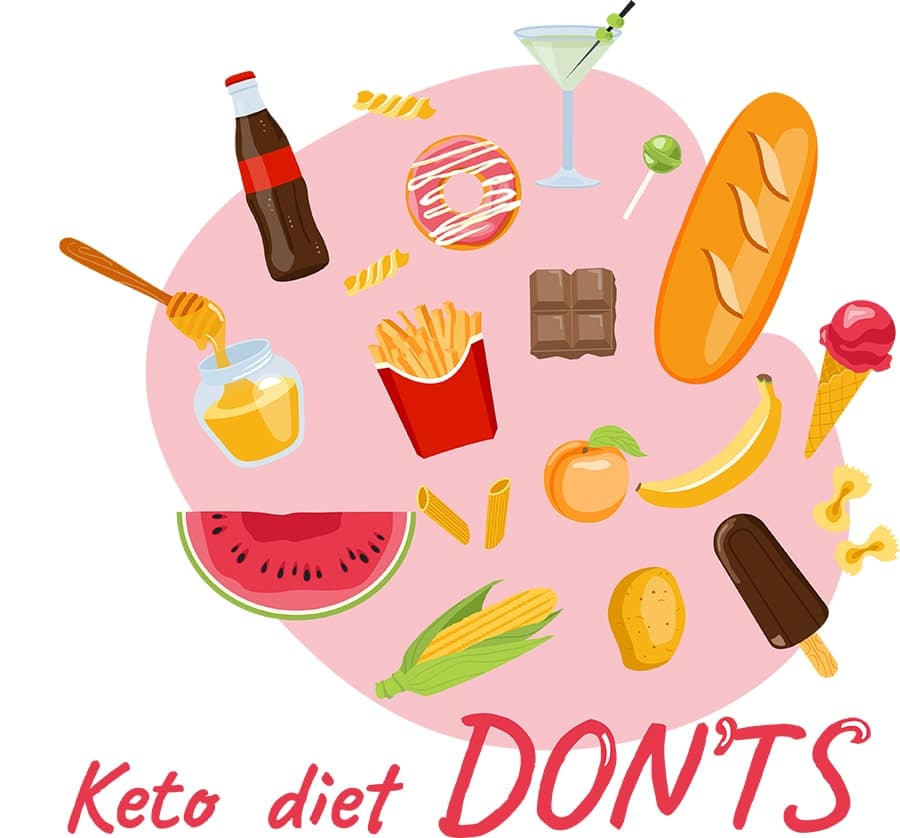Going keto aims to reset or sharpen your body’s insulin response, which excess refined and processed carb intakes has blunted over time.
This adaptation sits at the heart of the ketogenic diet’s effectiveness because it has the potential to boost your metabolism, which promotes weight loss and fat loss and can help to address symptoms associated with lifestyle diseases that afflict so many today.
To help you transition as smoothly as possible to a ketogenic lifestyle, consider these dos and don’ts:
Keto dieting dos
- First check with your doctor or healthcare practitioner if this diet is safe and appropriate for you, especially if you are pre-diabetic or diabetic as these conditions increase the risk of a potentially serious condition known as ketoacidosis.
- Eat sufficient fat, particularly foods high in medium-chain triglycerides and monounsaturated and polyunsaturated fats, including coconuts, avocados, natural oils, tree nuts and certain seeds, as well as unprocessed meats and leafy green vegetables.
- Drink sufficient water and replace electrolytes.
- Get sufficient sleep.
- Monitor your calorie intake to avoid overeating because fat contains 9 calories per gram, compared to 4 calories per gram of carbohydrates and protein.
- Constantly monitor your blood lipid profile to manage any adverse conditions that may arise from an increase in cholesterol.
- Progressively reduce the amount of carbohydrates consume over time to no more than 50g/day.
- Add specific keto supplements to your eating plan to make it easier to adhere to this lifestyle and support your efforts to achieve and maintain ketosis.
- Supplement with a multivitamin and mineral complex to compensate from a lack of micronutrients usually derived from the carbs, fruit and vegetables excluded from a ketogenic diet.
- Include a fibre supplement to maintain healthy digestion.
- Test your urine using keto strips or sticks to determine when you reach a state of ketosis and maintain this state as required.
- Train using a low volume, high-intensity weight training approach to preserve muscle, or a higher volume, low-intensity approach for cardio and endurance-based exercise, at least until you adapt.
- Abandon your ketogenic diet if after three weeks your body hasn’t adapted.
Keto dieting don’ts
- Don’t significantly reduce your carb intake without going through a “metabolic shift” – the process whereby the body is weaned off its reliance on glucose and learns to function properly using ketones as an energy source.
- Don’t eat processed meats, root vegetables, legumes (including peanuts), sweet fruits, grains, fast and convenience foods, low-fat variants, sweets, chocolates, processed carbs, sugar, artificial sweeteners, starchy carbs, baked goods, and margarine.
- Don’t drink sugary drinks, sweetened beverages, excessive dairy milk or alcohol.
- Don’t include too much protein in your diet. The body can convert amino acids into glucose, which can shift you out of your ketogenic state.
- Don’t give up if you experience brain fog or a dip in cognitive function initially. The brain relies primarily on glucose and adaptation to ketones can take up to three weeks.

















